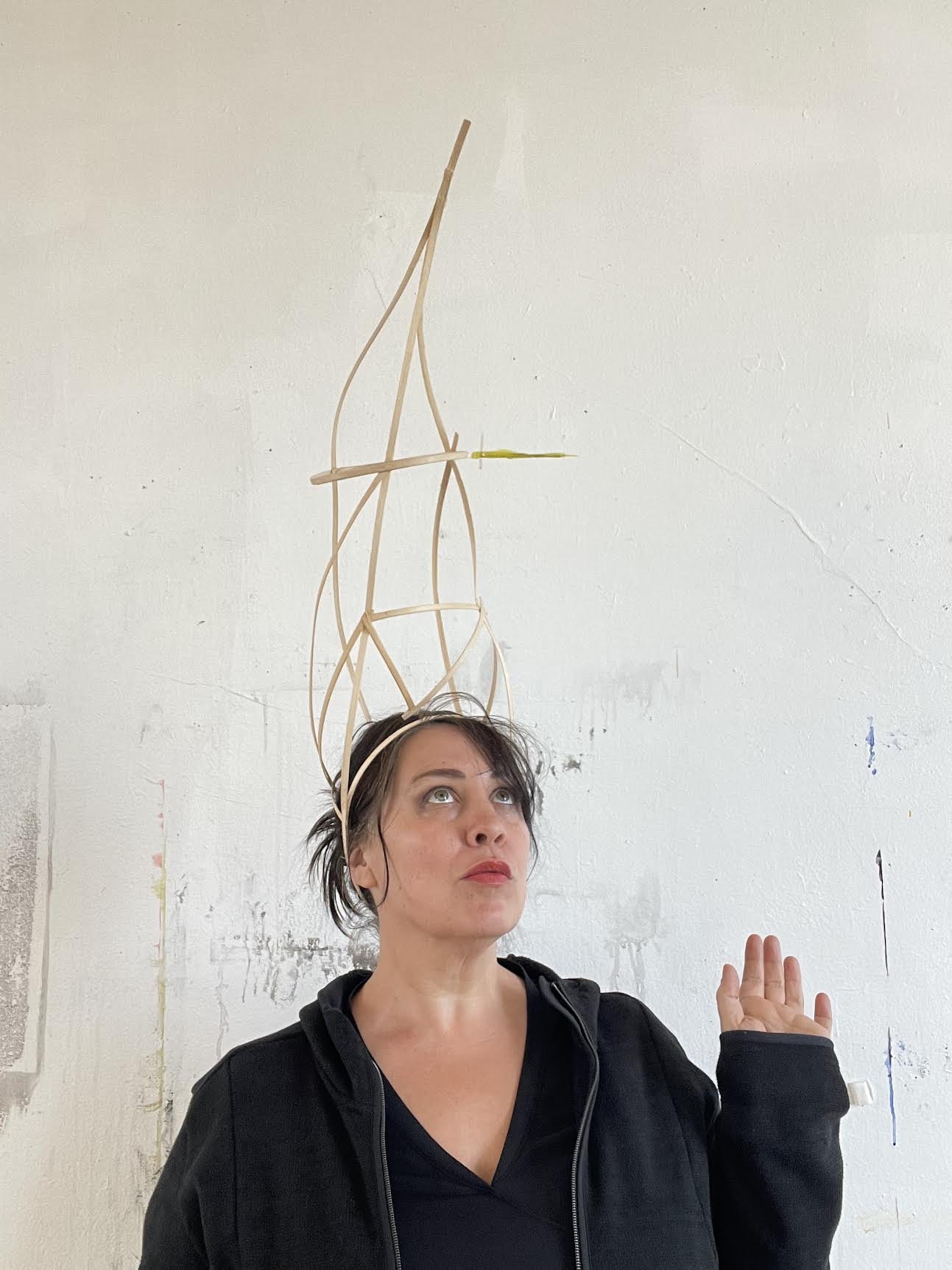One of the most intriguing works, Alignment, illustrates this theory. Utilizing seaweed, reed, red thread, painted birch panels, cloth covered wire, custom electronics, Thréinfhir has programmed two models of black holes which rotate separately at random, only occasionally aligning in “spooky action”.
She continued: “I'm not sure what the actual reason is, but they're basically connected. And it's like how is this happening? What seems to be going on, is that there's these infinitely small wormholes and they connect all the quantum particles. This is called quantum foam. And it’s this giant thing that like probably doesn't exist. We think this is what's happening, but half of this is just completely theoretical. We have no proof, nothing.
Do white holes exist? We don't know. And I live in a world where I'm like, yes, they do.
The idea that this thing I’ve been chasing for all my life is inside of me by the billions that I, you, everything around us, the air, the copper, water, that everything is filled with like an infinite amount of wormholes. I get goosebumps thinking about this, right? It's so fucking beautiful.
We have been taught to view science and technology as servants. The alchemist, and the proto scientist, and then the scientist, and then The Enlightenment, and then Capitalism—they see all this acquired information is something to be subjugated in order to get rich and win wars.
What if, instead, we were using these pieces of knowledge or unique skills to just marvel at the fucking universe. What if we were using them in ritual? In connection?
Wormhole Animism is asking, ‘What is your orientation to these things?’ Animism on Earth is important because it’s literally linked to our survival. Even if you can’t go there, we’re killing the planet. You have to believe that rivers have rights, you have to believe that water is sacred. You have to believe that we honor the animals outside—because if you kill all these things, if you consume them all, then you consume yourself. It’s violence.
But if we expand that out into the furthest reaches of the imagination of what space and the universe are, then it becomes kind of a sacred orientation to the world around us. For decades, I've been pulling out the magic feeling of this wormhole portal in the sky. And what do I find out? Just minutes ago in my lifetime, below my skin, below the atoms, I’m made up of an infinity of wormholes. How could I go after that in an aerospace way? In a military-industrial way? It’s sacrilegious, to start with ‘how can I monetize this?’”







